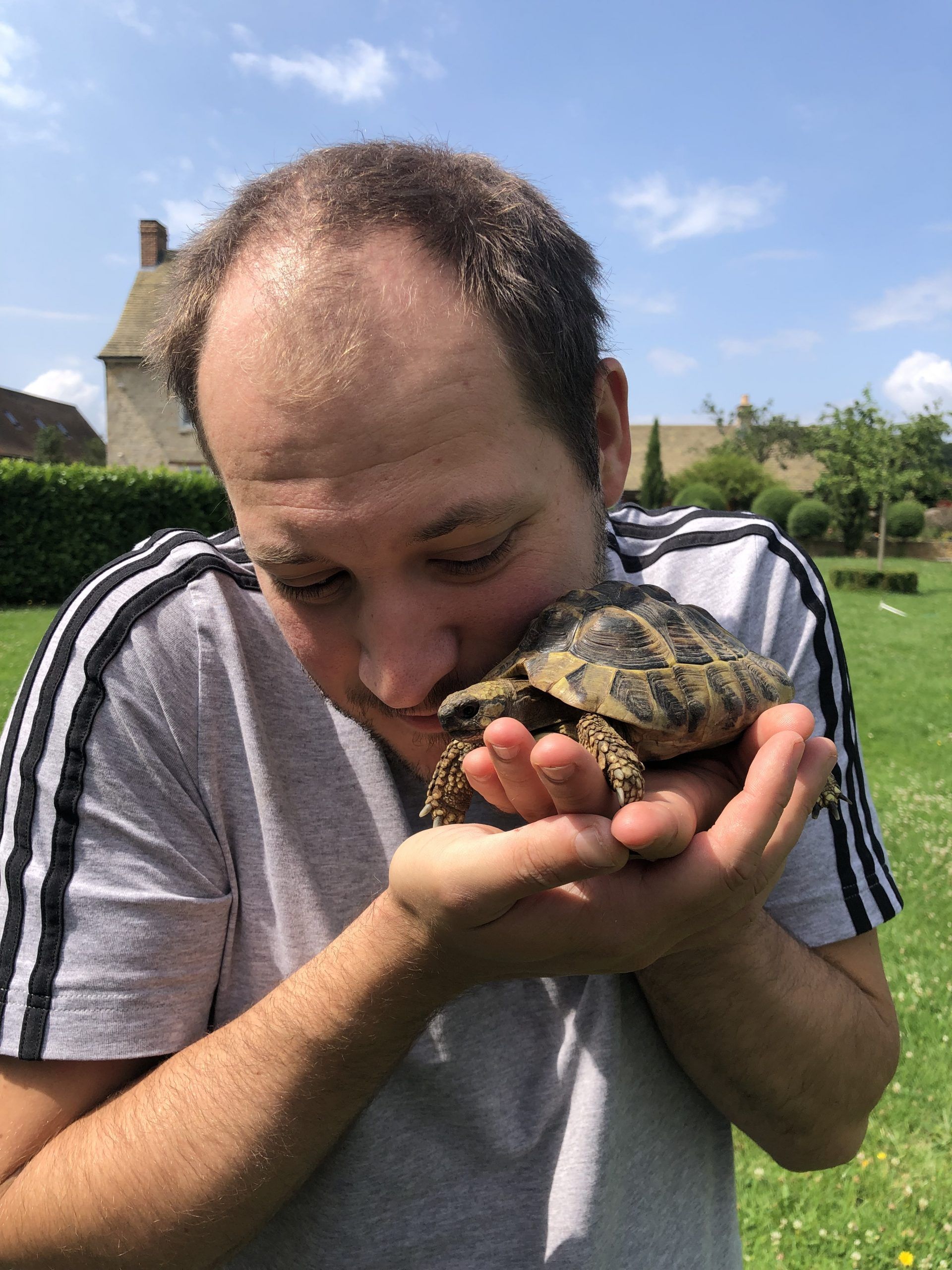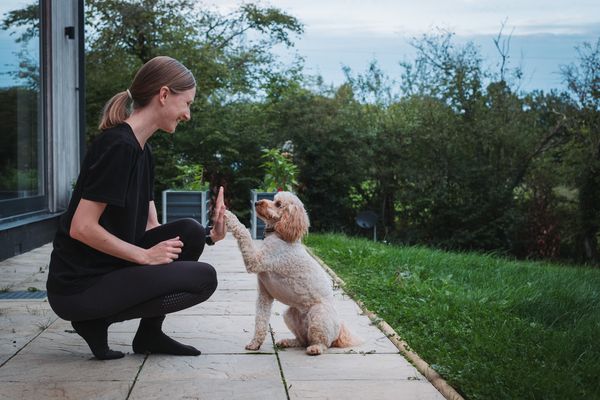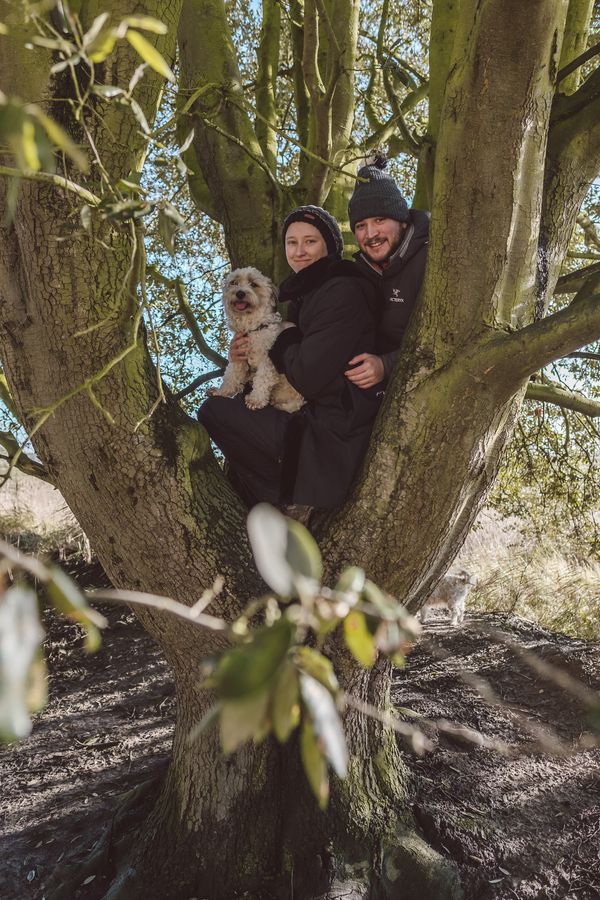Taking care of someone else’s pet is always a big responsibility, especially when the pets have specific care instructions. As full time pet sitters, we’ve experienced a lot – from giving medication to grumpy cats and picking out hooves on skittish horses, to leaving the radio on for parrots or hand-feeding alpacas. Taking care of reptiles is a whole other experience, and again the situation varies massively depending on the kind of pet we’re looking after. In this post we’re going over points to consider when committing to pet sitting for reptiles, and questions to ask the owner, from our experience caring for reptiles over the years.
Table of Contents
Can you care for a reptile?
The very first thing to consider when you have the opportunity to pet sit a reptile requires you to be honest with yourself! Some reptiles will need handling as part of their care, and if you’re squeamish about snakes or don’t like the feel of scales, it’s worth being upfront about whether you can care for the pets to the best of your abilities. You can always ask the owner if the pet will need handling while they’re away – we’ve cared for a Ball Python on numerous occasions at a pet sit in Maidstone where the owners have taken care of the more involved duties before we arrive, so us handling Nagini (yes, like in Harry Potter) was not necessary for our stay.
Other reptiles, such as Bearded Dragons, like to be handled! At a house sit in Huntingdon, the owners showed us how to take Kai out of his tank and how to hold him, so we were prepared to do so for our stay. Luckily for us, he loved nothing more than laying in the palms of our hands and didn’t wriggle at all! When you first speak to the owner, ask them about the reptile’s temperament, and whether they are escape artists! We once completed a house sit in Oxford caring for Shelby the tortoise, amongst a menagerie of other animals, and the owners told us they once lost him for over a year in their expansive garden when he escaped from his pen.
All in all, pet sitting for reptiles is completely different to caring for a dog or cat. Everyone expects to pet a dog during a dog sit, but if a reptile owner asks you to take their pet out of its tank, could you comfortably do so? For the most part, canine and feline friends will also let you know when they want something, and if they’ve been trained in a certain way they’ll be good at telling you exactly what that something is! Reptiles – not so much. Take the time to consider whether you’ll be able to care for this kind of pet.
Feeding and water
With any animal we care for, the food routine is one of the most important elements of the sit! When caring for reptiles over the years, we’ve had a variety of different requirements depending on what the animal needs, and it’s vital to ask about the specific feeding routine to know whether this is something you’ll be able to do. For Nagini the snake in Maidstone, the owners fed her a mouse before they left which would be enough to sustain her for their short trip, so we were only required to slide open her tank and top up her water and mist the tank each day. Her owners specifically instructed us to do this during the day, as Ball Pythons are nocturnal and eat at night – better to be safe and change the water while she slept in the daytime!
At a house sit in Lewes, Rocky the Bearded Dragon needed a mix of blueberries and salad every day, then live locusts every few days. It was very sweet watching him crunch on a blueberry – not so much with the jumpy locusts that we had to extract from a container with long tweezers, and place in Rocky’s tank. As a vegetarian myself, this duty fell on Chris’ shoulders for the duration of our stay!
Other reptiles are a lot less challenging – Speedy Eddie, a gecko we cared for at a house sit in Bournemouth, needed a small amount of paste mixing up each morning and placing in his tank. Another essential part of reptile care is water! Make sure you ask the owner about topping up and changing water bowls, as well as whether the plants in the environment will need misting (dependant on the reptile). As Nagini the snake lived in a hot tank, we were required to mist her plants each day to ensure the tank was kept humid.
Lighting
This is another essential part of reptile care that differs from looking after other house pets! Reptiles need a large amount of UV light, that they would usually find in their natural habitats in the wild. For pet reptiles, you’ll find the owners have a lighting set up to ensure their pet is getting the vitamin D they need. Caring for Kai the Bearded Dragon at our Huntingdon house sit, the owners had a strict time in the morning that his lamp would need turning on, and a strict time in the evening when we would have to shut it off again – reptiles rely on their circadian rhythm just like we do! Caring for Rocky the Bearded Dragon in Lewes, the owners had set his heat lamp to turn on and off automatically – we just had to check that the bulb was functioning correctly, which made our job a lot easier. Make sure you know the set up with the reptiles you’re caring for, to avoid harming the pet.
In case of emergency
As with any pet you may be unfamiliar with, it’s always worth doing some research before you arrive, just so you know what to expect! You’d be surprised at how much you can learn even from a quick Google search for facts about the animal, and this may help you notice behaviours or symptoms that are uncharacteristic for the pet while on the sit. If the reptile is older, you could ask the owner if they’ve experienced any health issues and if there’s anything you should look out for, or if they’ve had to visit a reptile vet. It’s always worth having veterinary contact information and location written down in case of an emergency, and if the pet is likely to need to visit the vet during your stay, make sure you’re able to transport them safely. In this case, owners should provide you with an appropriate transportation container. At this point, have a re-think about our first point in this post as to whether you’d be able to handle the pet if required!
General points to consider
A few things we’ve learned over the years about pet sitting reptiles:
- Always wash your hands before holding a reptile. In the case of snakes, they may mistake a certain scent for food and could nip your hand! Better to be safe than sorry.
- Always wash your hands AFTER holding a reptile. Salmonella bacteria can frequently be carried by reptiles, even when they themselves are not ill. Again, better to be safe!
- Take notes. If you’re worried about anything concerning care for the reptile, ask the owner to write down detailed instructions for you or take the time to make notes yourself that you can refer back to. An owner might say ‘Our gecko needs paste made every day’, but what is the ratio of powder to water? Another owner might say ‘Our snake needs her water topped up’ but at what time, and how frequently? As we’ve covered, reptile care is completely different to looking after a cat or dog, and it’s essential to have all the information you’ll need to safely carry out the sit. If in doubt, contact the owner and ask.
- Are reptiles difficult to care for? From time to time when we get asked what pets we care for, the most animated reactions come from us answering to say we’ve completed pet sits with snakes. Little do people know, Nagini was by far one of the easiest pets we’ve cared for! Reptiles can be very difficult to look after, but can also require very little – it can depend entirely on the length of the sit. If you’re booked to pet sit a snake for just a weekend, it’s very unlikely that you’ll have to carry out a lot of the regular maintenance of their environment or even their feeding. If the sit was a month long, it will be a completely different experience! Consider this when confirming the sit.
If you found this post helpful, please support our blog by donating as little as £1 to our running costs! Thank-you!









